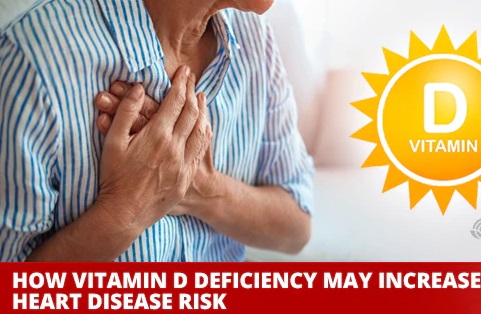Vitamin D deficiency and cardiovascular disease
Numerous domestic and foreign studies have been devoted to the study of vitamin D on various aspects of its effects on the human body. While the skeletal effects of vitamin D are widely described in the literature, its extraskeletal effects require further study. The mechanisms of vitamin D interaction with the cardiovascular system (CVS) are relevant, as heart and vascular diseases are one of the highest public health priorities in all countries. In 2016, there were 17.9mn deaths from cardiovascular disease (CVD). For example, in the US, the prevalence of CVD in adults over 20 years of age in 2013-2016 was 48.0% (121.5 million in 2016). Vitamin D has been shown to reduce CVD risk in several ways, including immunomodulation, inhibition of vascular smooth muscle proliferation, regulation of glucose metabolism and blood pressure. The heart and blood vessels contain many components associated with vitamin D. Low vitamin D levels are associated with a high risk of most CVDs such as coronary heart disease (CHD), left ventricular (LV) myocardial hypertrophy, cardiomyopathies, fibrosis, and heart failure (HF). In addition, vitamin D deficiency has been found in aneurysm, peripheral arterial disease, arterial hypertension (AH) and atherosclerosis. The prevalence of vitamin D deficiency is highest among the elderly, obese patients, nursing home residents, and hospitalized patients. About 1 billion people worldwide are vitamin D deficient and 50% of the population is vitamin D insufficient. A meta-analysis conducted in 2014 showed that 69.5% of the US population and 86.4% of the European population has vitamin D insufficiency(<30 ng/mL). The prevalence of severe vitamin D deficiency (<12 ng/mL) is 5.9% in the US,7.4% in Canada and 13% in Europe. Recently, the necessity of prescribing vitamin D therapy for the prevention and treatment of CVDs has been increasingly scrutinized.
Vitamin D has been found to play a significant role in the development and progression of the most relevant CVDs and the occurrence of their key FRs, such as AH, obesity and type 2 DM. The levels of vitamin D metabolites are associated with the occurrence of risks of adverse cardiovascular events. Vitamin D deficiency significantly increases the risk of CVD mortality, particularly CHD. Vitamin D levels also determine the future prognosis of patients with CKD and should be taken into account as patients have an increased risk of CHD, arrhythmias and congestive CH. Currently, few studies have been conducted to evaluate the efficacy of vitamin D therapy in reducing the risk of developing, as well as treating existing cardiovascular pathologies. There is a need to conduct additional RCTs with hard cardiovascular endpoints, which will allow to confirm the protective role of vitamin D therapy and decide whether it can be prescribed to patients with various CVDs.
There are two factors that contribute to the decline in vitamin D synthesis in our country:
1 - "Geographic Coordinates". It is scientifically proven that UVL (ultraviolet rays) is capable of synthesizing vitamin D up to 35 degrees north and south latitude, while Tajikistan is at 40 -41 degrees.
2 - "Globaldimming" (the phenomenon of total dimming or reduction of the amount of radiation from the sun reaching the earth's surface.
This effect is caused by natural and anthropogenic atmospheric pollution. From 1950 to 1990, the level of solar energy reaching the earth's surface fell by 9% in Antarctica and by 30% in the USA. In Russia and the UK, by 16%.
That is why we often have vitamin D deficiency, despite the fact that Tajikistan is a sunny country.
Accordingly, to prevent vitamin D deficiency, doctors recommend a walk in the fresh air from 8.00 to 10.00, consumption of foods rich in vitamin D (seafood, egg yolk, dairy products, etc.), as well as synthesized vitamin D in the form of drops or injections.
Ikromova Shukrona Mukhamadjonovna - Assistant professor of public health and medical statistics and history of medicine course
Translated Ismoilov R.

